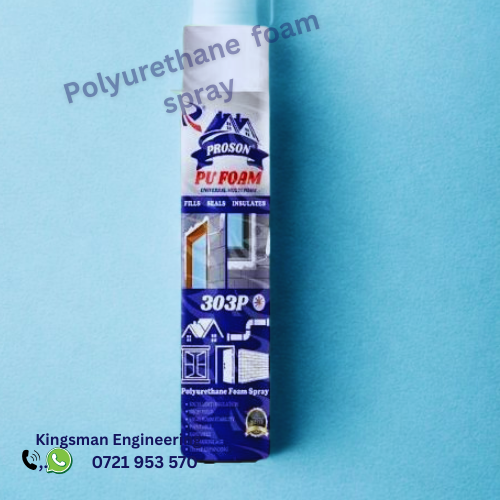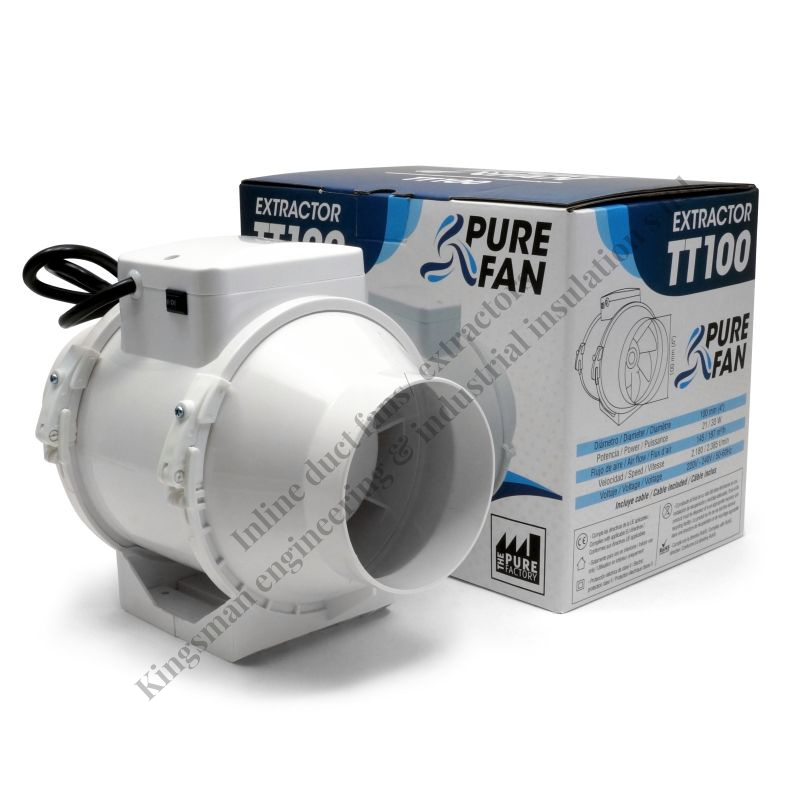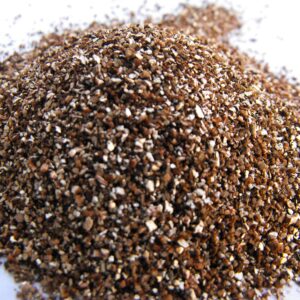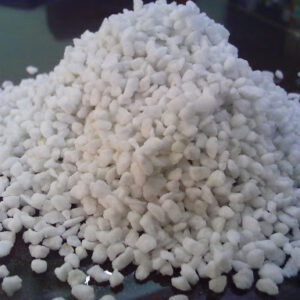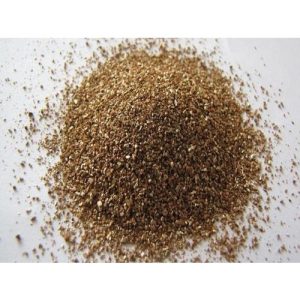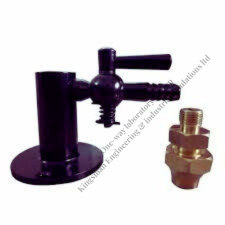Polyurethane Foam (PU Spray)
Kingsman Engineering & Industrial Insulation Ltd supplies professional-grade spray polyurethane foam (PU spray) across Kenya and East Africa. Our Polyurethane Foam (PU Spray) in Kenya solutions (open-cell and closed-cell) are specified by contractors, refrigeration installers, builders and facility managers for roof & wall insulation, cold rooms, pipe lagging, gap sealing and sound control. For quotes and technical help contact:
📧 info@kingsmanengineering.co.ke · 📞 0721953570 / 0722209507
What is Polyurethane Foam (PU Spray) in Kenya?
Spray polyurethane foam (SPF or PU spray) is a two-component insulation system (Component A = isocyanate, Component B = polyol blend) that is mixed at the spray gun and expands on contact to form a continuous insulating layer. There are two main types:
-
Closed-cell PU spray — high density, low permeability, high R-value, acts as an air- and moisture-barrier, adds structural rigidity.
-
Open-cell PU spray — lower density, softer, excellent sound absorption and good air-sealing, not a vapour barrier.
Both types cure within minutes and bond to most building substrates (concrete, block, metal, wood, plywood, insulation board). Selection depends on the application, budget and local building requirements.
Technical snapshot (typical ranges)
| Property | Open-Cell PU Spray | Closed-Cell PU Spray |
|---|---|---|
| Typical density | 8–15 kg/m³ | 30–45 kg/m³ |
| Thermal conductivity (λ) | ~0.035–0.040 W/m·K | ~0.022–0.028 W/m·K |
| Approx. R-value per 25.4 mm (1″) | ~R-3.0 to R-3.6 / inch | ~R-5.0 to R-6.5 / inch |
| Vapour permeability | High (breathable) | Very low (vapour retarder) |
| Water absorption | Moderate | Very low |
| Typical uses | Acoustic, internal cavity fill | Roofs, cold rooms, external walls, pipe insulation |
Note: R-values and λ vary by formulation and manufacturer. Use the product data sheet for project verification.
Why choose PU spray? Key advantages
-
Superior air sealing: PU spray creates a continuous, seamless barrier that eliminates drafts and thermal bridging.
-
High thermal performance: closed-cell PF offers excellent R-value per mm so required thickness (and occupied space) is minimized.
-
Moisture control: closed-cell forms a vapour retarder — ideal in humid climates or for refrigeration/cold rooms.
-
Structural benefit: high-density closed-cell foam adds panel stiffness and can strengthen roofs/assemblies.
-
Fast application: large areas can be insulated quickly with professional spray rigs — minimal downtime.
-
Longevity: properly installed SPF lasts decades without settling or sagging.
-
Versatility: adheres to most substrates and fills irregular cavities and penetrations.
Limitations & safety considerations of Polyurethane Foam (PU Spray) in Kenya
-
Flammability: most polyurethane foams are combustible and must be covered with an approved thermal barrier (e.g., 12.7 mm gypsum) or an intumescent coating per building code.
-
Professional installation required: installers must be trained and certified; poor application causes off-gassing, inadequate cure, or adhesion failure.
-
Health & PPE: fresh spray contains isocyanates — installers must use supplied-air respirators, suits, gloves and ensure ventilation. Occupants should avoid re-entry until cure and off-gassing limits are safe.
-
UV sensitivity: exposed foam degrades in sunlight and must be protected with cladding, paint, or coating.
-
Cost: higher upfront cost vs fibreglass or mineral wool — but often lower life-cycle cost due to energy savings and air-tightness.
Typical applications of PU foam spray in Kenya & best-practice recommendations
Roof insulation (industrial & commercial)
-
Recommended type: closed-cell PU spray.
-
Typical thickness: 50–100 mm for retrofit roof thermal upgrades; up to 150 mm for high-performance or cold-store roofs.
-
Benefits: seals joints, prevents ponding moisture into substrate, improves watertightness when combined with suitable deck coatings.
Wall insulation (external and cavity)
-
Recommended type: closed-cell for external façades (vapour control); open-cell for interior acoustic infill.
-
Thickness guideline: 25–75 mm depending on target U-value and cavity width.
Cold rooms & refrigeration systems
-
Recommended type: closed-cell only — acts as a vapour barrier and prevents ice build-up.
-
Typical thickness: 75–150 mm depending on design temperature and wall panel construction. Use closed-cell to meet hygiene and thermal stability needs.
Pipe & tank lagging
-
Recommended type: closed-cell applied to flanges, junctions and odd shapes where pre-formed insulation cannot fit.
-
Thickness: typically 13–50 mm depending on temperature and condensation control requirements.
Soundproofing & acoustic control
-
Recommended type: open-cell for internal acoustic lining (stud walls, service risers, plant rooms).
-
Thickness: 50–100 mm for effective absorption in mid-high frequency bands.
Gap filling & void sealing
-
Recommended type: open-cell for non-structural void filling; closed-cell for sealed voids where moisture ingress is a concern.

